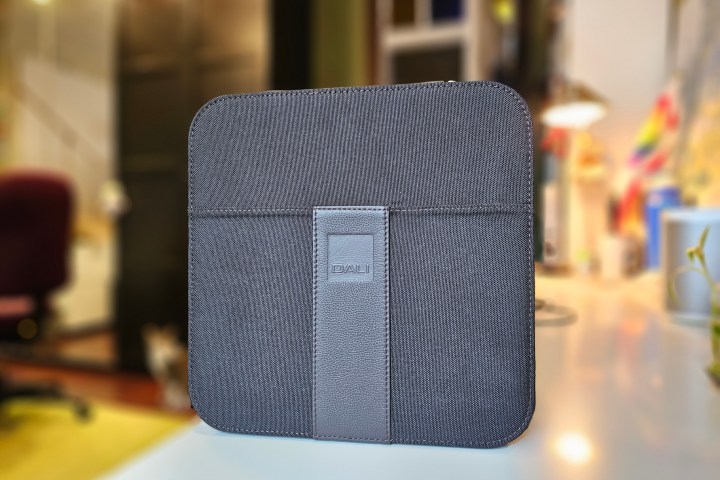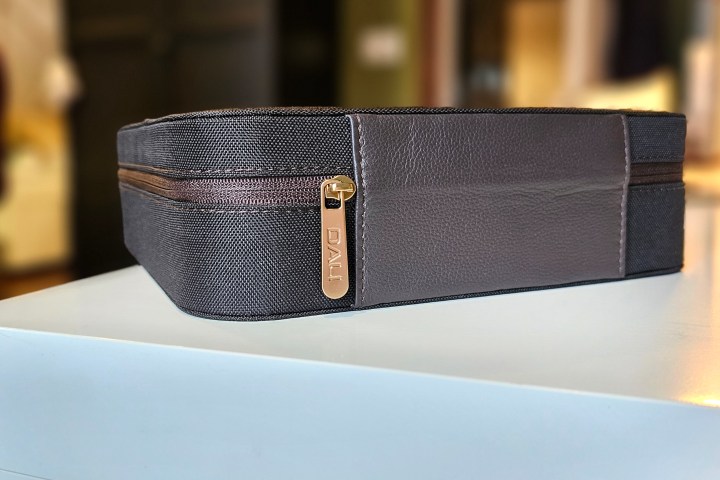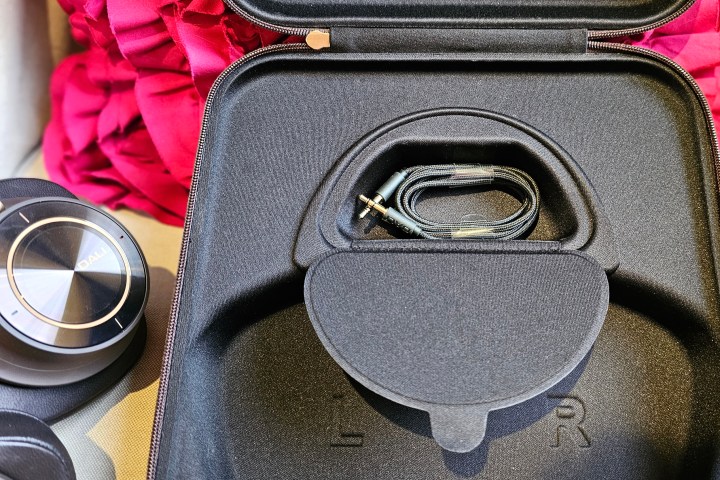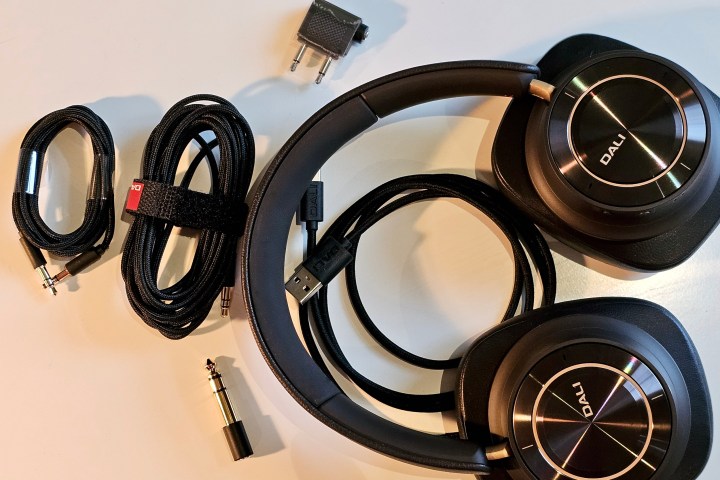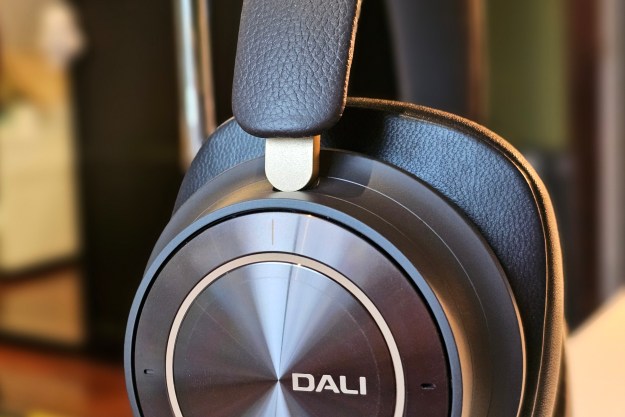
- Incredible sound quality
- Supreme comfort
- Top-notch build and materials
- Wired, digital, and wireless hi-res connections
- Very good battery life
- Clear transparency mode
- Very expensive
- No companion app
- No wear sensors
There are bound to be some audiophiles out there who still clutch their pearls at the thought of using a set of wireless headphones for serious music listening, but they probably haven’t heard what the latest wireless headphones can do. More specifically, they probably haven’t heard the Dali IO-12.
If they had, I’m guessing they’d change their minds. Because the IO-12 make a convincing argument that wireless cans can sound superb, and that they can also be your go-to wired headphones, thanks to an analog input that works even when the battery is dead.
Of course, to be open to that argument, you’ll need $1,300 in disposable cash. And that makes the IO-12 among the most expensive wireless cans you can buy — and out of reach for many music fans. Are they worth it? I spent a month with them to find out.
Dali IO-12: what’s in the box?
As befits a purchase price in excess of three figures, Dali leaves you little to want. The IO-12 come in a large, zippered storage case. I say “storage,” not “travel” case because, frankly, this thing is going to be tough to fit into a backpack or purse.
The headphones fold flat inside the case. Nestled in a webbed pouch and a concealed compartment are a USB-A-to-USB-C high-speed charging cable (that doubles as a digital audio cable), two lengths of 3.5mm analog cable (4 feet and just shy of 10 feet), a 3.5mm-to-quarter-inch adapter, plus a two-prong airplane adapter.
Dali IO-12: design and comfort
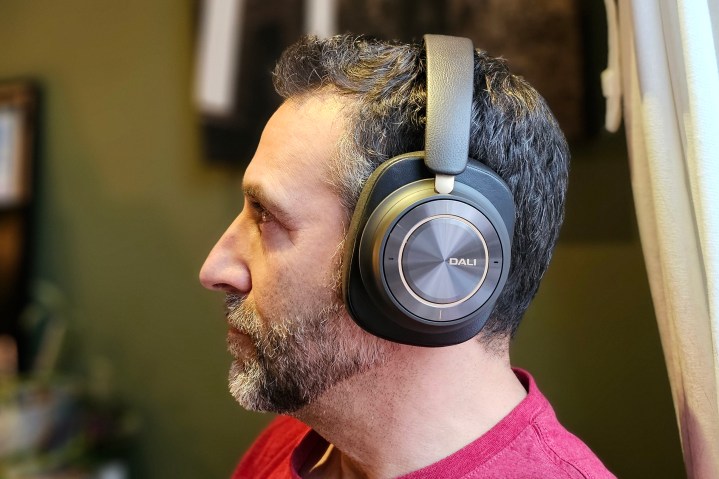
From a comfort perspective, the IO-12 are the headphones equivalent of a BarcaLounger. With big, leather-wrapped memory foam earcushions, these cans swaddle your head in a luxurious, comfortable hug. It’s a roomy fit with tons of space for even the biggest ears, and there’s so much contact surface with your head that pressure points are non-existent. The IO-12 encourage you to sit back, relax, and give yourself over to a lengthy listening session.
At 13.2 ounces, they’re almost as heavy as Apple’s AirPods Max (13.6 ounces). But thanks to those oversized earcushions, I found the IO-12 to be more comfortable than Apple’s cans. They also create a better seal. Instead of relying on a hinge point at the top of the earcups, the earcushions have their own pivot in the center of the cups, which gives them a greater range of motion. This was true even when wearing glasses.

Still, that weight doesn’t entirely disappear when you’re wearing them. A relatively light clamping force combined with the large mass of the earcups and cushions allows some shifting when you move your head — even though the leather-covered headband uses a soft but grippy rubber bottom layer. This makes them less suited to commuting that requires a lot of walking. It may also pose problems for those with small heads. I had the headband adjusted to its smallest size and it just fit.
I can’t say I’m a huge fan of Dali’s chosen dark chocolate brown with gold accents color scheme — I’m more of a black/silver/charcoal guy — but it’s hard to fault the construction quality. From the hinges and swivels to the easily removable earcushions, and the USB port that grips the cable like a vise, they’re very well-built.
Dali IO-12: connections and controls
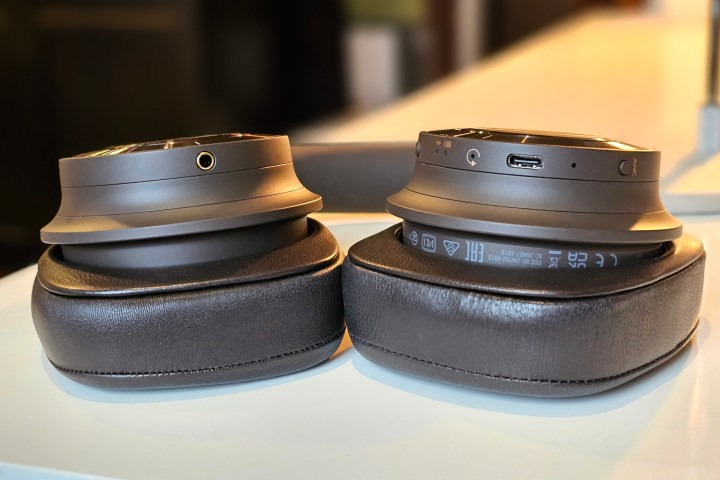
Dali has kept things remarkably simple on the IO-12. There’s no support for Google Fast Pair, so Android and Apple users will use their phones’ built-in Bluetooth device menu to connect the headphones. With Bluetooth Multipoint support, you can also have a second device connected simultaneously with seamless switching between the two.
Once you’re connected, that’s pretty much the end of the story. Unlike almost every high-end set of wireless headphones, the IO-12 don’t have their own companion app for mobile devices.
The IO-12 might just be the best-sounding headphones I’ve ever used.
This creates some potential drawbacks. If you’re an EQ junkie, you’ll have to make do with the two built-in EQ settings (more on these in a moment) or go in search of other tools to modify the sound. If Dali ever releases any firmware updates, they’ll have to be installed via the USB cable from a computer. And if you don’t like the way the headphones are configured from the factory, there’s no way to change it.
Take, for instance, the auto-off feature, which powers down the cans if no music is detected after 20 minutes. And also the voice prompts. Dali went to the effort of hiring a British male voice actor to record these messages (and they sound great), but I’d like the ability to disable them.
Keeping with the simplicity theme, the IO-12’s controls have almost no learning curve. Everything is located on the right earcup. The inner ring with the Dali logo provides a gentle physical button for playback, track skipping, and call management, while the outer ring controls volume — click the top for more, click the bottom for less.
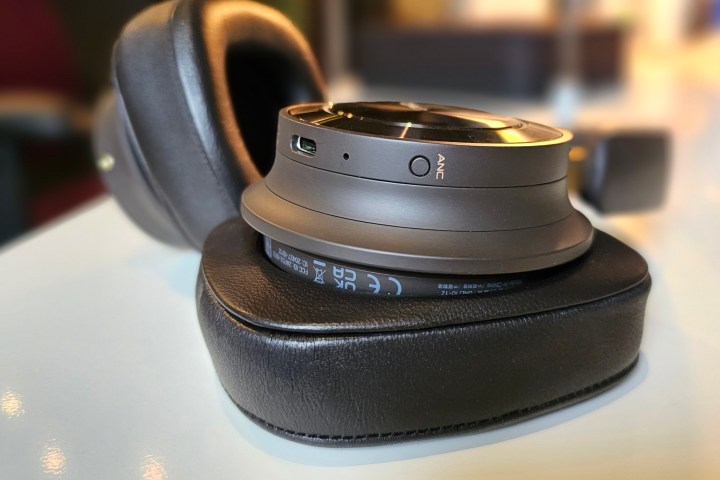
Dali ensured that these clicks make as little noise inside the headphones as possible, but it may have gone overboard on the central button — it has almost no travel to its mechanism, which can make the double and triple clicks needed for track skipping a bit tricky.
The EQ mode button is placed within easy reach of your thumb, but the ANC mode button (which I’d argue will get used way more often) is mounted on the front side of the earcup — an awkward spot for both your finger and your thumb.
Surprisingly, given that it’s almost ubiquitous these days on high-end wireless cans, Dali has chosen not to equip the IO-12 with wear sensors to auto-pause and resume your music when removing or replacing them.
Dali IO-12: sound quality
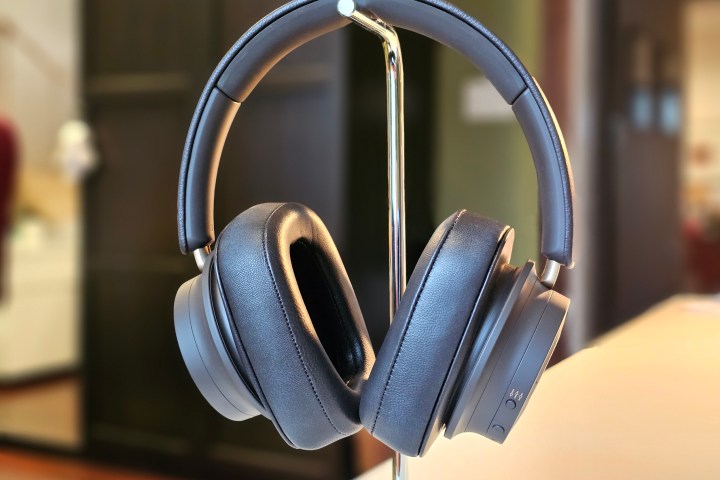
The IO-12’s claim to fame, at least according to Dali, is their use of the company’s full-size speaker technology, including Dali’s Soft Magnetic Composite (SMC) magnet system, to power a set of 50mm drivers.
The primary benefit is a significant reduction in distortion. It’s so low, says Dali, that the IO-12 achieve electrostatic levels of midrange clarity.
Sadly, I didn’t have a set of electrostatic headphones on hand for a direct comparison, but I’m not sure it matters. The IO-12 might just be the best-sounding headphones I’ve ever used.
When we talk about speakers or headphones possessing a flat or neutral sound, we mean that they don’t add (or detract) anything from a recording. No boosted bass; no extra sparkle in the highs — just as true a reproduction of sound as is possible.
The trouble is if a set of headphones doesn’t have a corresponding ability to render each frequency authentically, “flat” can sound just that — devoid of depth, life, and energy.
So when I say the IO-12 deliver a beautifully neutral sound signature, I mean that in the best way possible.
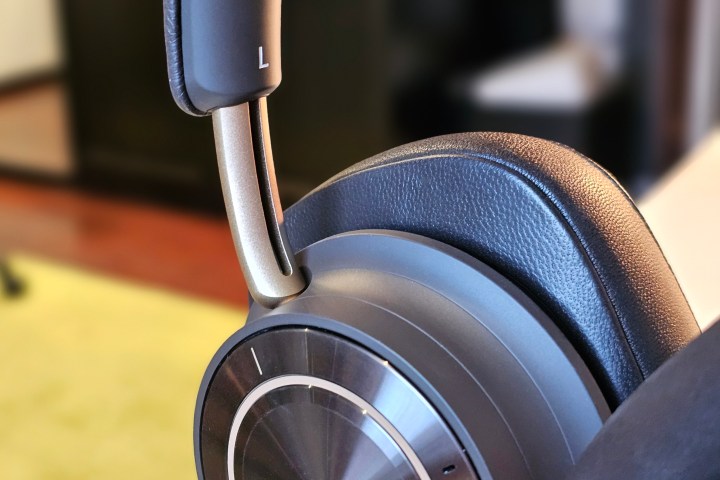
As I fired up my usual 20 to 25 test tracks, I almost forgot I was there to test headphones. Old favorites, new favorites — the genre didn’t matter. The IO-12 rendered each song as well or better than I’d ever heard them. Bass lines were tight and musical, transients proved lightning-fast, and vocals were clear and effortless.
In these characteristics, the IO-12 aren’t dissimilar to the Master & Dynamic MW75 or the Bowers & Wilkins Px8. But where the IO-12 prove superior is their soundstage.
Closed-back headphones tend to keep everything contained. Not so with the IO-12, which sound as roomy as they feel.
On White Collar Whiskey, Emily Wolfe’s vocals have a distinct echo that pairs with (and accentuates) the distortion-rich guitar hits. On the MW75 and Px8, I can hear that echo clearly. With the IO-12, I could hear it move outward as it decayed into space, giving the song an entirely new dimension.
Two sound modes are available via the EQ button: Hi-Fi and Bass. Hi-Fi is for those seeking that flat EQ. But don’t rule out Bass mode. I find some tracks a little too piercing in the highest registers, while some songs beg to be given an extra ounce of oomph. In both scenarios, bass mode does the trick.
As I said in the previous section, EQ fanatics may not love it, but with just these two modes, I was able to get the right sound for my ears every time.
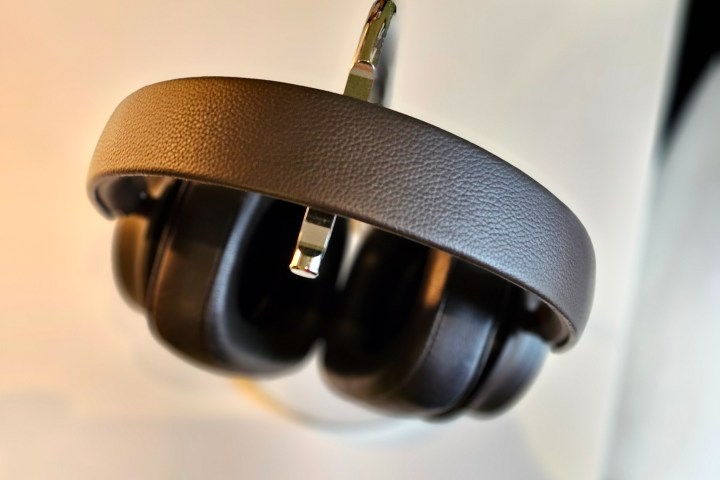
The IO-12 do a tremendous job over Bluetooth (with aptX HD/aptX Adaptive phones getting slightly better performance than an iOS-based device), but for an even more detailed listening session, use the included USB cable to plug into a computer and let the headphones’ built-in digital-to-analog converter (DAC) render lossless, hi-res audio up to 24-bit/96kHz from a source like Apple Music or Amazon Music.
I’m a bit surprised that Dali didn’t include a USB-A-to-USB-C adapter for the computer end of the cable — I tried one and was able to listen to Android phones, too. Sadly, an Apple Lightning adapter didn’t get the headphones recognized as a valid output by an iPhone.
For the purists, the two analog cables (plus optional quarter-inch adapter) are just as exciting, but in an entirely different way. When the power is turned off, the IO-12’s architecture routes the analog jack input directly to the drivers, with only a passive filter in the signal path.
However, if you want to mix the IO-12’s processing with your analog source, you can do that too — power the headphones on, and the signal will be converted to digital and then routed through the same path as incoming digital sources.
With a low, 25-ohm impedance, you should be able to drive these cans with just about any headphone amp, including mobile DAC/amps and the headphone jack on any laptop.
Dali IO-12: noise cancellation and transparency
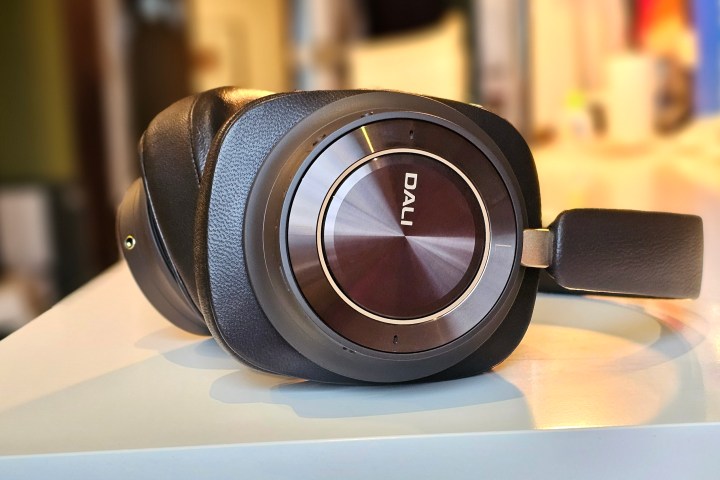
Active noise-canceling (ANC) on the IO-12 mostly reduces low-frequency sounds in your environment. With only four mics, it’s not as strong or as adaptable as the Bose QuietComfort Ultra Headphones (10 mics), the Sony WH-1000XM5 (eight mics), or the Apple AirPods Max (also eight mics), but you’ll definitely notice a difference. Most important is that it doesn’t affect sound quality one bit.
Transparency mode is surprisingly good — I say that because transparency seems to be harder than ANC to get right for many headphones. You can easily carry on a conversation and hear your own voice with very good clarity.
What I dislike about Dali’s ANC setup (other than the less-than-ergonomic button location) is there’s no way to toggle between just ANC on and transparency modes — the ANC button always takes you through an in-between “off” mode.
Most headphones allow you to customize the behavior of ANC mode switching, but without a companion app, there’s no way to do this.
Dali IO-12: call quality

Maintaining a high degree of voice quality while also canceling out background noise can be a tough balancing act. Only a very small number of headphones get it right. Amusingly, it seems like Dali simply decided not to try.
The microphones are impeccably tuned — they deliver an almost studio level of detail. Your voice will come through for your callers with impressive clarity. However, so will everything else. I did one test recording after a snowfall and laughed as I listened to it later — you can hear my boots crunching through the snow.
Bottom line: your callers will feel like you’re in the room next to them. But depending on where you’re sitting (or standing), they may also feel like you’re not in that room alone.
Dali IO-12: battery life
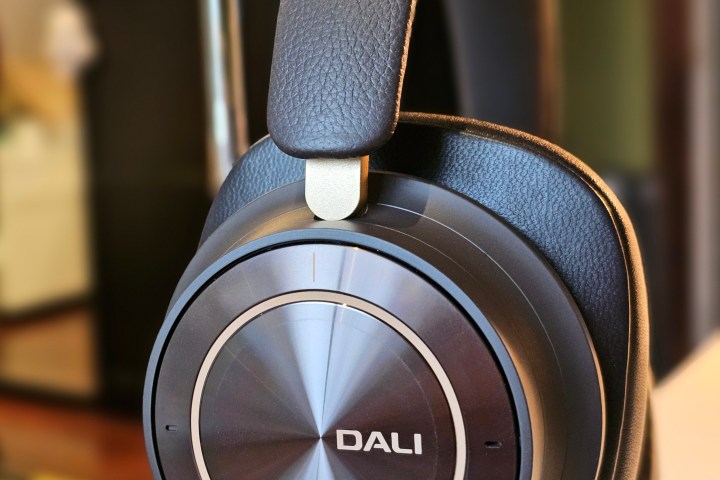
Dali claims about 35 hours of battery life for the IO-12, a number that apparently changes little through your use of ANC. It assumes 50% volume, and from what I’ve seen, it’s more or less what you’ll get.
That’s not bad for a set of wireless cans. It’s roughly on par with the Sony WH-1000XM5 (30 hours) and handily beats the AirPods Max (20 hours.) The IO-12 don’t have a quick-charge function. But given their ability to operate as wired cans without any power at all, I’m inclined to say that part matters a lot less.
Yes, the Dali IO-12 are expensive. Some might say too expensive for a set of wireless headphones. And yet, if you place a very high priority on sound quality because you can hear and appreciate the small, subtle differences that high-end gear can offer, the IO-12 might be worth the price of admission.
I won’t tell you that they sound twice as good as wireless headphones that cost half as much, but I’ll say this: I’ve yet to hear wireless cans that sound better.
Add to this their quality materials and build, top-notch comfort, and excellent support for analog, lossless digital, and wireless audio, and the Dali IO-12 start to look like a worthwhile investment for those who are serious about their sound.
Editors' Recommendations
- Best wireless earbuds for 2024: Sony, Bose, Soundcore, and more
- Dali says its latest wireless headphones achieve electrostatic levels of clarity
- Focal’s first wireless headphones promise ANC and hi-fi sound for $799
- Sony delivers the $100 WF-C500, its most affordable set of true wireless earbuds
- Meters headphones hands-on review: Analog style with a digital twist


